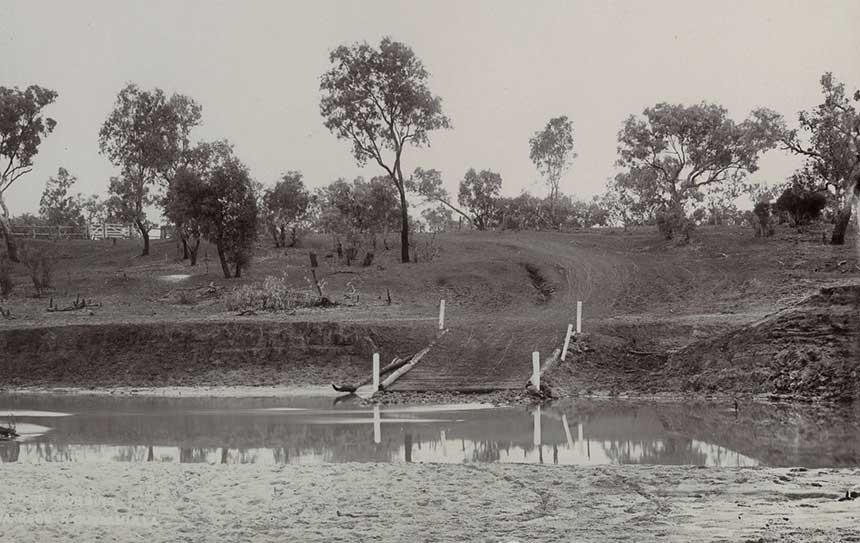The Warrego great divide
The north south run of the Warrego River from Charleville through Wyandra and onto Cunnamulla is the great dividing line of the local region. While improvised river crossings served well enough in dry times, when the rains came the district was cut in two by the swollen river channel. This made the opening in June 1929 of an all weather bridge crossing here at Wyandra an event of major regional significance.
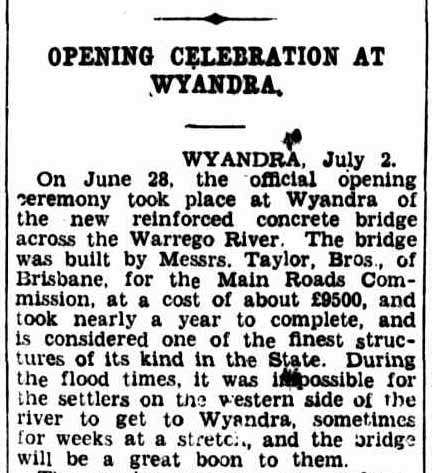
As a newspaper report in the Brisbane Courier explained:
"During the flood times, it was impossible for
the settlers on the western side of the river to get to Wyandra, sometimes for weeks at a stretch and the bridge
will be a great boon to them".
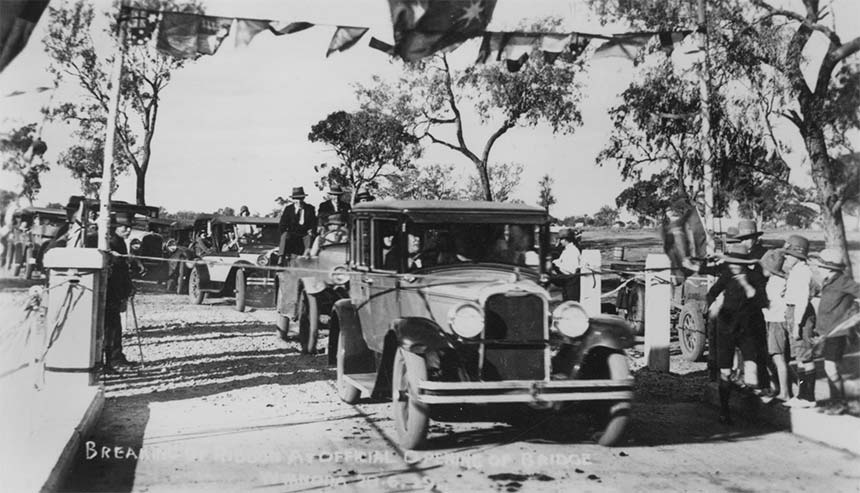
The impact of this bridge in opening up a new road into the Paroo River to the west can be easily appreciated from the 1930s road map section shown below.
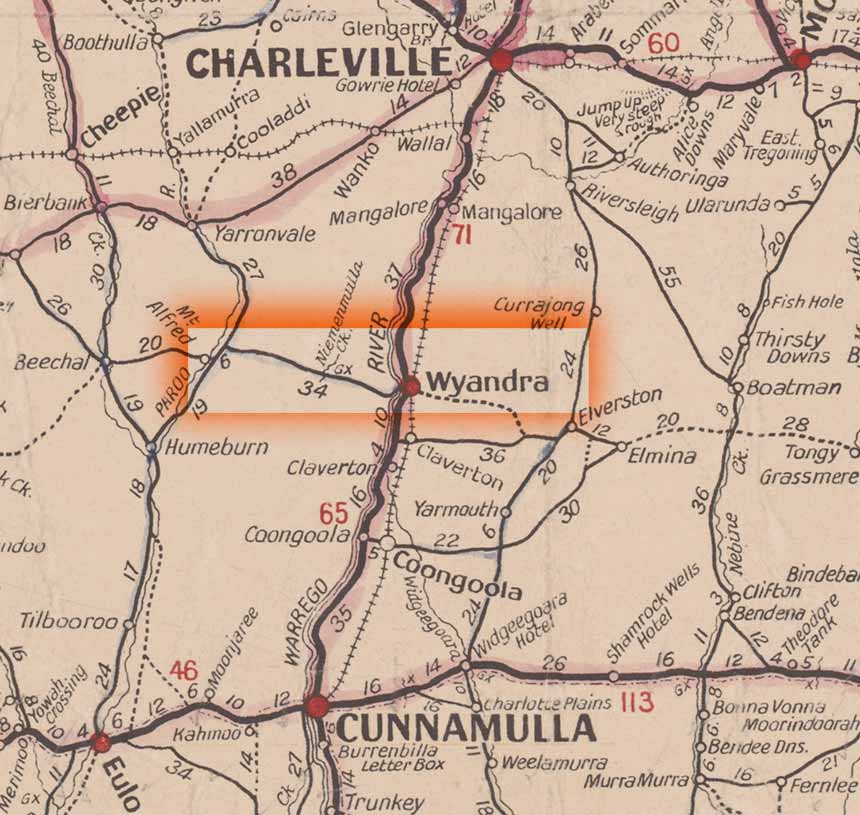
Having a secure, well paved river crossing to rely on in order to get their woolclip into the Wyandra railhead was also a huge boon to pastoralists on the Warrego's west bank and beyond. While bullock teams were adapted to conveying goods across rough country, trucks needed good infrastructure if they were to cross creeks and rivers without mishap.
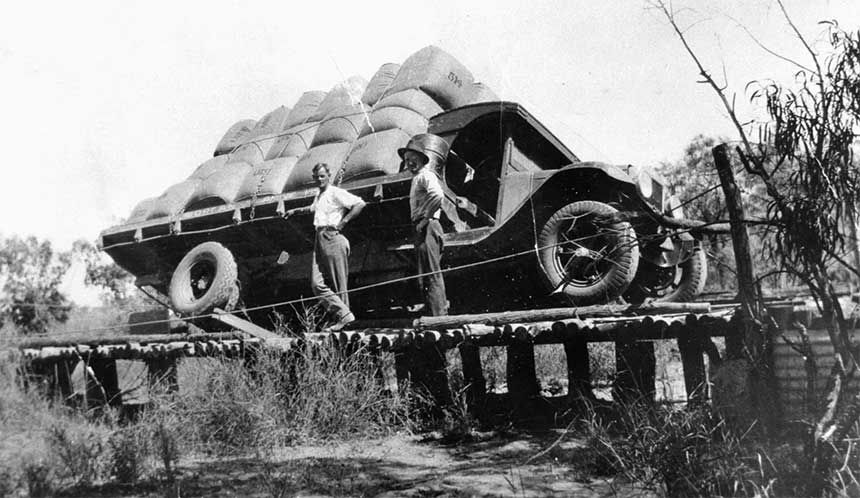
Surviving dry spells
The eventual creation of the township of Wyandra allied to the arrival of the new railway station in 1897 was a direct result of the deep and reliable pools of water found in the Warrego River here. These were so important a feature that they were mentioned on the first map of the district squatting runs made in the 1860s.

As the town grew over the opening decades of the 20th century and increasing train traffic placed extra demands on the water supplies drawn from the nearby Warrego waterholes, so too did the town's vulnerability to dry spells increase.
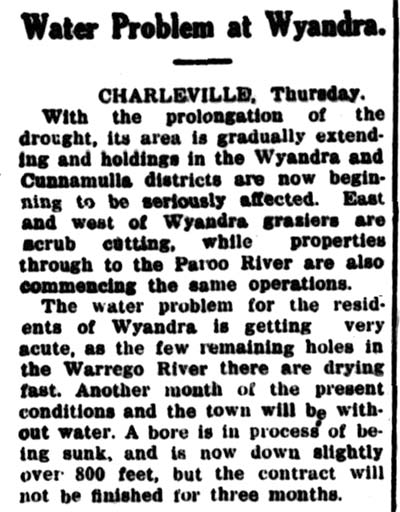
As ther Dalby Herald reported during a drought period in May 1935:
The water problem for the residents of Wyandra is getting very acute, as the few remaining holes in the Warrego River are drying fast. Another month of the present conditions and the town will be without water.
By this time artesian bores were already a well established feature of the local pastoral operations. Even as early as 1911 when the map below was produced, a network of bores and connecting aqueducts was a feature of the catchment here.
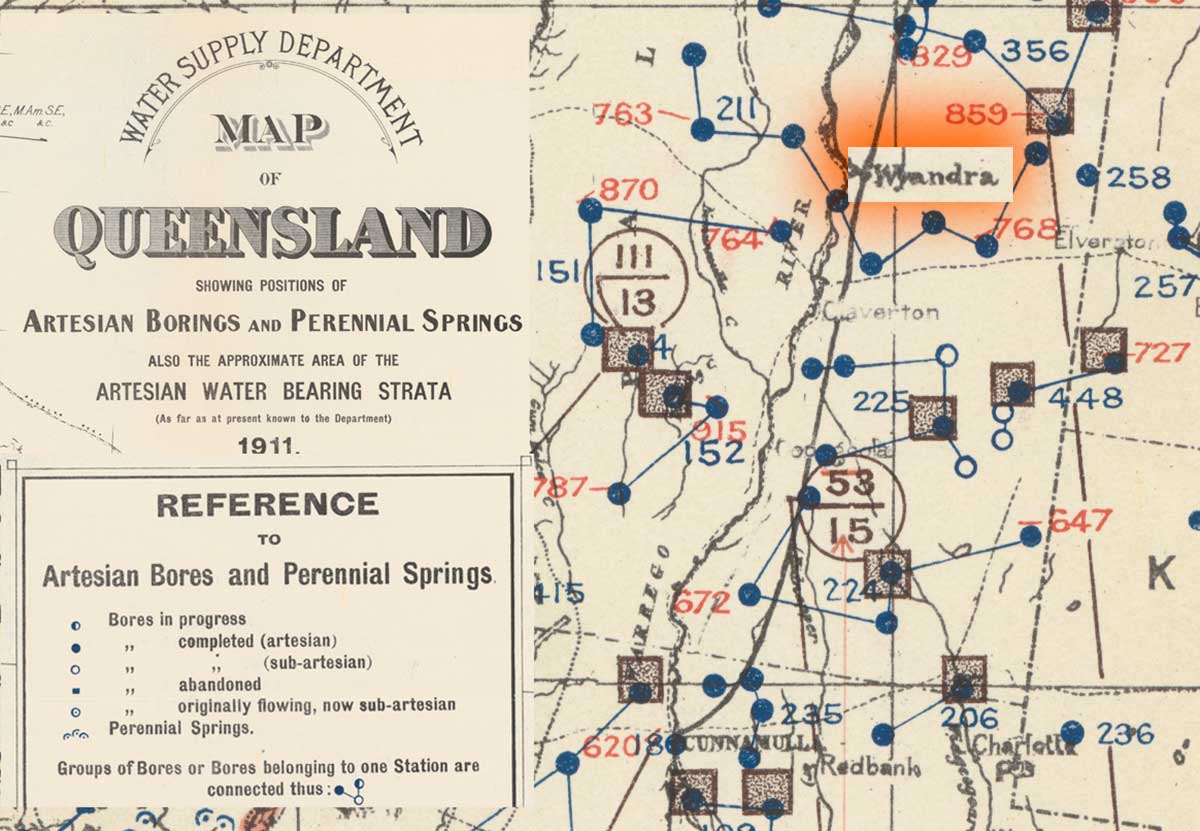
Extending this approach to put in a bore that could help drought proof the town water supplies was a natural extension to this approach, and one that would for the first time reduce the residents' dependence on the natural waterflows of the Warrego River.


